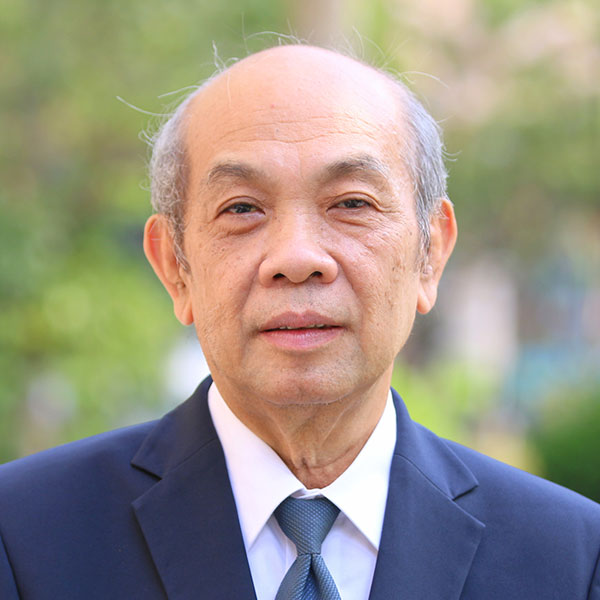Day 1 :
Keynote Forum
Bimal Roy Krishna
Professor and Director of Pharmacology
Keynote: Current Guidelines for the Management of Asthma
Time : 10:00 to 10:40 AM

Biography:
Dr. Krishna is currently Professor and Director of Pharmacology at the College of Osteopathic Medicine, Touro University in Nevada. He obtained a Bachelor of Science (First Class Honors) in Pharmacology and Physiology and a Doctor of Philosophy, Medicine (OB/GYN/Pharmacology) from Monash University in Australia. Dr. Krishna also teaches for the Step 1 USMLE and COMLEX reviews for Kaplan Medical throughout the United States and in UAE, Europe, Saudi Arabia, India, Mexico and the Caribbean. He has been teaching online for Kaplan University for over 7 years and is the contributing author for Kaplan Medical’s Pharmacology Review Book. He has contributed to numerous publications and is a member of a number of organizations including Fellow-American College of Clinical Pharmacology.
Abstract:
Keynote Forum
Richard Weinshilboum
Richard Weinshilboum Professor of Pharmacology and Medicine Mayo Clinic Rochester, MN, USA
Keynote: Pharmaco-omics of Selective Serotonin Reuptake Inhibitor (SSRI) Response
Time : 10:40 to 11:20 AM

Biography:
Dr. Weinshilboum received B.A. and M.D. degrees from the University of Kansas, followed by Internal Medicine residency at the Massachusetts General Hospital, a Harvard Hospital. He was also a Pharmacology Research Associate at the US NIH in the laboratory of Nobel Laureate Dr. Julius Axelrod. He is presently Professor of Pharmacology and Medicine at the Mayo Medical School. Dr. Weinshilboum’s research has focused on pharmacogenomics, with over 475 published manuscripts. Dr. Weinshilboum has been the recipient of many awards including a Burroughs Wellcome Scholar Award in Clinical Pharmacology, the ASCPT Oscar B. Hunter Award, the ASPET Harry Gold Award and an honorary Doctor of Science degree from the University of Kansas. He has also served as a member of the Advisory Councils for two US NIH Institutes, NIGMS—the NIH Institute within which Pharmacology is based--and NHGRI, the NIH Institute that sponsored the Human Genome Project.
Abstract:
Pharmacogenetics involves the study of the role of inheritance in individual variation in drug response phenotypes. In the 21st century “pharmacogenetics” has evolved to become “pharmacogenomics” with our ability to scan agnostically across the genome and then to become “pharmaco-omics” with the merger of other “omics” techniques with genomics. We have applied a metabolomics-informed genomics research strategy to study the pharmaco-omics of SSRIs, the class of drugs that is the worldwide standard of care for the pharmacotherapy of the number one psychiatric disease, Major Depressive Disorder (MDD, depression). Specifically, we identified metabolites assayed with an LCECA platform that were associated with measures of outcomes (HAMD and QUIDS) in response to the SSRI therapy of MDD patients enrolled in the 803 patient Mayo Clinic PGRN-AMPS SSRI clinical trial. The assayed metabolite that was most highly associated with outcomes (remission and response) was plasma serotonin (5-HT) and the metabolite most highly associated with symptom severity was plasma kynurenine. GWAS for plasma 5-HT identified two genome-wide significant SNP signals near or across the TSPAN5 and ERICH3 genes, while GWAS for plasma kynurenine identified SNPs in the DEFB1 and AHR genes. Subsequent functional genomic studies showed that knockdown of TSPAN5 and ERICH3 in CNS-derived cells resulted in decreased 5-HT in the culture media, that ERICH3 played a role in monoamine vesicular function and that DEFB1 and AHR were both associated with inflammation, a process that contributes to MDD pathophysiology. Finally, a machine-learning based predictive algorithm was developed that incorporated these SNPs which could predict SSRI response with approximately 75% accuracy as compared with 55% using only clinical information. In summary, the application of a “pharmaco-omic” research strategy identified novel genes that contribute to individual variation in SSRI therapeutic response and also, perhaps, to mechanisms involved in MDD pathophysiology.
- Clinical Pharmacology
Location: Berlin ,Germany

Chair
Shirley Taniguchi
Professor
Session Introduction
Oussama BAALOUDJa
Laboratory of Reaction Engineering, Faculty of Mechanical Engineering and Process Engineering USTHB, BP 32, Algiers, Algeria
Title: Artificial neural network modeling of the elimination of antibiotics in the wastewater by advanced processes of oxidation

Biography:
BAALOUDJ Oussama is a second year PhD student and a part-time faculty member in the Faculty of Mechanical Engineering and Process Engineering at Houari Boumédiène University of Science and Technology. his doctoral research investigates the elimination of antibiotics in the wastewater by advanced processes of oxidation and Artificial neural network modeling. He takes a multidisciplinary approach that encompasses the fields of modilling, photocatalysis and pharmaceutical process. He is fouder of a mobile application that facilitate the exchange of medicines in Algeria named as Pharma Exchange.
He has 8 months of experience as a research and development engineer (R&D) in a pharmaceutical company called Pharmalliance. He holds a master's and degree in pharmaceutical process engineering from Constantine National Polytechnic University, Algeria, which studied the formulation of a detergent solution for dental scaling. Also the study of fermentation in bioethanol in the presence of saccharomyces cerevisiae. His training and technical skills are both theoretical and practical with many pharmaceutical research & development projects.
Abstract:
In recent years, different pharmaceutical compounds have sullied the aqueous environment, counting antibiotics which required uncommon consideration due to their supported use in human and veterinary pharmaceutical[1]. Such products are actually non-biodegradable. Antibiotics are the biggest concern of all pharmaceutical products, as their environmental contamination can increase aquatic toxicity[2]. Furthermore, the presence of these compounds in water resources even at very low concentrations improves the bacterial resistance against them[1], which create a nuw types of microorganism antibiotic aesistance named superbugs. Antibiotic resistance is the ability of a bacterium or other micro-organisms to survive and reproduce in the presence of antibiotic doses previously thought to have been successful against it. Antibiotic are widely used not only in the treatment and prevention of diseases in human and veterinary medicine, but also in the improvement of feed quality and growth rates in the livestock and poultry industries[3]. Analytical study [4] of observational data to determine trends in antibiotic consumption in 76 countries from 2010-2015 found that over the 15-year period studied global antibiotic consumption had increased by 65%. Antibiotic usage increased from the 21.1 billion defined daily doses to 34.8 billion. The antibiotic consumption rate increased by 39 % from 11.3 to 15.7 defined daily doses per 1,000 inhabitants per day.
A typical example for antibiotics is Cefixime which is a broad-spectrum, third-generation cephalosporin antibiotic derived semisynthetically from the marine fungus Cephalosporium acremonium with antibacterial activity[2]. Cefixime is (6R,7R)-7-[[(2Z)-2-(2-amino-1,3-thiazol-4-yl)-2-(carboxymethoxyimino)acetyl]amino]-3-ethenyl-8-oxo-5-thia-1-azabicyclo[4.2.0]oct-2-ene-2-carboxylic acid with molecular formula C16H15N5O7S2.
Because of antibacterial existence, conventional biological approaches cannot effectively eliminate antibiotic residues or polluted waters. On the other hand, advanced processes of oxidation (AOPs) have proved to be an appropriate alternative for the rapid degradation of recalcitrant and non-biodegradable compounds in water[5]. In particular, photocatalysis has been used successfully to degrade various types of pharmaceutical drugs and organic compounds[6]–[9] .
Furthermore, An artificial neural network model has been proposed for the prediction of photocatalysis Cefixime efficiency. The network was trained using the experimental data obtained at different pH with different catalyst dose and initial CFX concentration. In order to find the most suitable and secure network, various algorithms and transfer functions for hidden layer have been tested. By trial and error procedure, the optimum number of neurons in the hidden layer was found. The predicted data from the designed ANN model were found to be in a good agreement with the experimental data (R2 = 0.996).
Abdulmuez
Libyan International Medical University Faculty of Medicine, University of Benghazi, Libya
Title: Knowledge and practice of physicians' towards use and prescription of proton pump inhibitors in Benghazi, Libya

Biography:
Abstract:
Proton pump inhibitors (PPIs) are the most potent inhibitors of gastric acid secretion. They are commonly prescribed for a variety of gastrointestinal disorders. PPIs are generally considered to be safe agents which enhance PPIs over-prescription by physicians worldwide. The aim of the study was to assess and evaluate the knowledge and practice of physicians towards PPIs use and prescription in Benghazi city. A cross-sectional questionnaire based study was conducted on August 2019. Data were entered,and analyzed using the Statistical Package for the Social Sciences software (SPSS). The results were presented as frequencies and percentages. A total of 118 physicians from different departments and levels in Benghazi medical center (BMC) completed the questionnaire. Majority of the physicians (86.4%) prescribe PPI to their patients. One-third of the physicians prescribed PPIs for less than 2 weeks. Omeprazole was the most preferred PPI by physicians. Acute gastrtisis was the most common indication for PPI use by 67.8% of physicians. The majority of the physicians instruct their patients to use PPI Before a meal. Physicians knowledge regarding PPIs adverse effects and possible drug-drug interactions were low. It has been recommended that awareness and education programs are needed to update the physicians knowledge and Practice about PPI use and prescription
Fozia Alshmmaki
Department of Pharmacology and Department of Pharmacognosy, Faculty of Pharmacy, Tripoli University Tripoli, Libya
Title: Anti-inflammatory effect of Euphorbia dendroides L
Biography:
Abstract:
Euphorbia dendroides L. (Euphoraceae) is a tree-like semi-succulent spurge growing as a wild plant in Libya. In the present study, the anti-inflammatory activity of ethanolic extracts of Euphorbia dendroides L. in a dose of 400 mg/kg p.o. was investigated in mice by means of carrageenan-induced paw oedema method. The pedal oedema was measured by means of a ¹micrometer; using 0.025 ml of 1% carrageenan solution was injected subcutaneously into one hind paw of each mouse, compared with aspirin in a dose of 100mg/kg orally to serve as a reference compound. The results showed that the ethanolic extract exhibited a highly significant inhibition in oedema (p < o.o1) in the group treated with E. dendroides L. and the control. In order to confirm the anti-inflammatory effect of the plant extract, using aspirin as a reference compound Percentage of inhibition of the oedema was 84% for Euphorbia dendroides L., and 86% for aspirin and this confirms that the expected mechanism of Euphorbia dendroides L. anti-inflammatory effect is probably through decreased in the prostaglandin's level.
Key words: Ethanolic extract of E. dendroides L., Anti-inflammatory, Carrageenan test
Valentin R. Karabelyov
Department Pharmacology, Pharmacotherapy and Toxicologyâ€, Faculty of Pharmacy, Medical University-Sofia, Bulgaria
Title: Design and in vitro evaluation of possible MAOB activity of 1,3,4-oxadiazole derivatives and melatonin analogues

Biography:
Valentin Karabelyov has completed his high education in 2019 from Medical University of Sofia, Faculty of Pharmacy. Now he is a first year PhD student in department of Pharmacology, Toxicology and Pharmacotherapy in the same university. Last year, Valentin participated in the 2-nd World Congress on Pharmaceutical and Chemical Sciences, where he presented a poster on the theme ,,In vitro effects of newly 2H-chromene and coumarin hydrazide-hydrazone derivatives on isolated rat liver microsomes and brain synaptosomes.” He has also actively participated in European Chemistry Congress, 2016 and 9th Annual European Pharma Congress, 2018
Abstract:
Based on our previous investigation, two different classes of compounds - 1,3,4-oxadiazole derivatives (3a-3e) and melatonin analogues (5a-5e) were synthesized and evaluated for their neuroprotective effect. The aim of our study was to investigate activity in vitro of novel compounds on hMAOB enzyme. Monoaminoxidase activity assay of recombinant human MAOB was performed using a fluorometric method by Amplex UltraRed reagent [1] with small modifications, where Tyramine hydrochloride was used as a substrate. Of the substances tested, 3a and 3d exhibit a statistically significant inhibitory effect on MAOB, commensurate with that of selegiline. The results suggest that some of the oxadiazoles may show promising results in other in vitro models resembling Parkinson's disease.
Susbin Raj Wagle
Curtin University, Perth, Australia
Title: Nano-delivery of secondary-lipophilic drug system: In vitro and ex vivo studies.

Biography:
My name is Susbin Raj Wagle. I am from Nepal and came to study in Australia in year 2014. I successfully completed Master of Biomedical Science from Curtin University in December, 2015.
During my study and worked time, I was exposed to the field of clinical research through my courses; that is where my interest developed in this research field. I thoroughly enjoyed the challenge these courses provided and I found myself immersed in the world of research.
This research and lab field is, to me, one of the fundamental areas of science in modern day society. But, I knew this study is not sufficient to be a genuine researcher. Hence, I decided to continue further study, and I enrolled in a Master of Philosophy at Curtin University on 1 May, 2018. The normal length of this course is 2 years. Throughout the course period, my study and research will be focused on drug delivery and encapsulation. This course and topic I choose is a solid step towards my future career as a researcher who understands and appreciates science and technology.
My ultimate goal is to purse a PhD (under present research topic and supervisor) and return back to my home country Nepal as in recent years, the Nepalese government has paid more and more attention to higher education and scientific research, which is becoming better and better.
Abstract:
Probucol is a highly lipophilic drug that has potent anti-inflammatory and anti-oxidant properties. It has been shown to a protective effect on pancreatic β cells and made a potential therapeutic agent in the treatment of T2D. Despite its high efficacy and strong antioxidants effects, PB showed significant variation after oral absorption, poor oral bioavailability, and potentially severe side effects, which restricted its use.This study aimed to examine PB and LCA microcapsules in terms of the microcapsules’ morphology, microencapsules membrane strength, release kinetics and biological effects ex vivo. Microencapsules (PB-SA and PB-LCA-SA) were prepared with a Buchi-based microencapsulating system, based on the jet-flow microencapsulation technique using polymer sodium alginate (SA) and examined in vitro (formulation studies) and ex vivo.
Both control and test microencapsules showed good and uniform morphology characteristics. Incorporation of LCA did not alter the drug content, production yield microencapsulation efficiency, zeta potential, and particle size. However, LCA reduced conductivity, microencapsules swelling, improved membrane resistance and controlled and targeted release of PB. The microencapsules swelling and drug release pattern were higher at high pH values (pH 7.8, p<0.05). LCA microencapsules enhanced cell viability but not statistically significant, reduced the inflammatory profile (p <0.01), increased anti-inflammatory cytokine and improved bioenergetics parameter (p <0.01). LCA improved the characteristics and release pattern of PB microencapsules and also enhanced their pharmacological activity in vitro and ex vivo, suggesting potential oral targeted delivery and applications in diabetes treatment.
Kirtika Madan
Department of Pharmaceutical Science, Banasthali University, Jaipur, Rajasthan, India
Title: Amelioration of chemically induced nociception & inflammation by 7-hydroxy coumarin through the modulation of COX-2, iNOS and inflammatory cytokines
Biography:
Abstract:
Aim: The objective of the current investigation was to explore the analgesic effect of naturally occurring coumarin and the involvement of inducible cyclooxygenase (COX-2), inducible nitric oxide synthase (iNOS) and cytokines in the observed effect.
Materials and methods: Acute toxicity of 7-hydroxy coumarin was evaluated according to OECD guidelines. Anti-nociceptive effect was explored by inducing chemical hyperalgesia using acetic acid and formalin in mice. ED50 of 7-hydroxy coumarins was calculated in acetic acid model. Modulation of cyclooxygenase and nitric oxide pathway by 7-hydroxy coumarin was examined by stimulator/precursor challenge with substance P and L-arginine respectively and quantification of COX-2 and iNOS expression by immunohistochemical analysis in spinal tissues. Involvement of inflammatory cytokines TNF-α and IL-1β was investigated using LPS challenge and subsequent ELISA analysis of these inflammatory mediators in serum. Carrageenan inflicted paw edema was employed to explore the anti-inflammatory activity of 7-hydroxy coumarin.
Maadwar Sasikala
Geethanjali College of Pharmacy, Keesara, Hyderabad, Telangana, INDIA
Title: CYTOTOXIC OXINDOLE DERIVATIVES AS EGFR INHIBITIORS:, PHARMACOPHORE MODELLING AND MOLECULAR DYNAMICS STUDIES

Biography:
Maadwar Sasikala has submitted her Ph.D thesis entitled Design Synthesis and screening of Novel Heterocyclic compounds to Sri Padmavathi Mahila University Tirupati, currently working as Assistant professor in Geethanjali college of Pharmacy, previously worked as Project Assistant in Indian Institute of Chemical Technology, Hyderabad, India. Published nine research article in reputed Journals and attended and participated in eight National and International conferences.
Abstract:
Statement of the Problem: Epidermal growth factor receptor (EGFR) is one of the over expressed and crucially targeted protein in many solid tumours and is a fascinating target for developing new drugs: Scarcity and need of effective drugs in present therapy: In the current study we have focussed on elucidation of the mechanistic insights of cytotoxic potentials of oxindole derivatives by performing in vitro EGFR inhibition assay of cytotoxic oxindole compounds which are earlier proved for their cytotoxic activity against breast cancer (MCF7) and ovarian cancer (SKVO3) cell lines and performing various molecular modelling techniques such as Docking, Pharmacophore modelling, 3D QSAR and Molecular dynamics studies. Findings: In vitro EGFR inhibition assay revealed that compounds with substantial cytotoxic activity against breast cancer (MCF7) and ovarian cancer (SKVO3) cell lines showed potential EGFR Inhibition. Molecular docking studies against kinase domain of EGFR protein indicated the probable interactions of oxindole derivatives. Pharmacophore modelling studies had identified a pharmacophore model with three hydrogen bond acceptors and three aromatic rings (AAARRR.1003) as a potential model for cytotoxic activity against MCF7 cell lines and validated through 3D QSAR studies resulting in superior regression scores (r2 = 0.92, q2 = 0.80 and Pearson R = 0.95). Molecular dynamic studies revealed the conformational changes in the EGFR-compound 1b complex and EGFR-compound 1c complex during the 25 ns simulation time frame. Further simulations with longer time period may provide deeper insights of ligand interactions in the protein environment.Conclusion & Significance: Compound 1b has performed potential in vitro EGFR inhibition among the title compounds, which is supported by its molecular dynamics simulations with EGFR protein. Hence it is noteworthy to use compound 1b as a new scaffold for further development of multifunctional compounds.
Mir-Jamal Hosseini
Departments of Pharmacology and Toxicology, School of Pharmacy, Zanjan University of Medical Sciences, Zanjan, Iran
Title: Clozapine attenuated mitochondrial dysfunction, inflammatory gene expression, and behavioural abnormalities in an animal model of schizophrenia

Biography:
Mir-Jamal Hosseini, Associate Prof. of Toxicology, Zanjan Applied Pharmacology Research Center, Zanjan university of Medical sciences, Zanjan, Iran; Department of Pharmacology and Toxicology, School of Pharmacy, Zanjan University of Medical Sciences, Zanjan, Iran
Abstract:
Beyond abnormalities in neurotransmitter hypothesis, recent evidence suggests that mitochondrial dysfunction and impaired immune system contribute to the pathophysiology of schizophrenia. Prefrontal cortex (PFC) undergoes maturation and development during adolescence as a critical time window, during which brain is vulnerable to environmental adversities and is prone to the development of psychiatric disorders such as schizophrenia. Methods: Applying eight weeks of post weaning social isolation stress (PWSI) to rats, as an animal model of schizophrenia, we evaluated the effects of PWSI on the mitochondrial function and expression of immune-inflammatory genes in the PFC of normal and stressed rats and then, each group were divided into treatment (clozapine; CLZ, 2.5 mg/kg/day for 28 days) and non-treatment groups. Results: Our data showed that PWSI provoked schizophrenic-like behaviors in rats and induced mitochondrial dysfunction and upregulation of genes associated with innate immunity in the PFC. Chronic treatment with CLZ attenuated the effects of PWSI on behavioral abnormalities, mitochondrial dysfunction as well as immune-inflammatory responses in the PFC of rats. Conclusions: These results may advance our understanding about the mechanism of action of CLZ that targets mitochondrial dysfunction and immune-inflammatory responses as factors involved in the pathophysiology of schizophrenia
Peeravat Natrsanga
Center of Excellence in Natural Products Chemistry, Department of Chemistry, Faculty of Science, Chulalongkorn University, 10330, Bangkok, Thailand
Title: Two new xanthones from the roots of Cratoxylum cochinchinense and their cytotoxicity

Biography:
Associate Professor Dr. Santi Tip-pyang has completed his PhD at the age of 34 years from Mississippi State University in the USA in 1990. He is the lecturer at Department of Chemistry, Faculty of Science, Chulalongkorn University. He has published more than 60 papers in reputed journals.
Abstract:
Two new xanthones namely cratochinone A (1) and cratochinone B (2), along with 16 known xanthones, were isolated from the roots of Cratoxylum cochinchinense. Their structures were characterized by spectroscopic methods, especially 1D and 2D NMR as well as comparison with those reported in the literature for known xanthones. All isolated compounds were evaluated for their cytotoxicity against five human cancer cell lines (KB, HeLa S-3, HT-29, MCF-7 and Hep G2 cell lines). Compounds 2, 5, and 7 showed significant cytotoxic effects against all cell lines with IC50 values in the range of 0.91–9.93 μM, while 10 exhibited cytotoxicity against the KB, HeLa S-3, and HT-29 cells with IC50 values of 7.39, 6.07, and 8.11 μM, respectively. Compound 12 exhibited cytotoxicity against both KB and HeLa S-3 cells with IC50 values of 7.28 and 9.84 μM
Zeyang Wang
College of Pharmaceutical Sciences Zhejiang University, China
Title: Renal targeted oxygen nanocarrier for enhanced chemoresistance renal carcinoma cancer

Biography:
Zeyang Wang, Ph.D Candidates, Zhejiang university, CHN. Master of Sicence, University of Sheffield, UK. bachelor of Scienc, Nanjing university of technology, CHN
Abstract:
Renal cell carcinoma (RCC) which is one of solid tumors with intrinsic hypoxia feature is resistant to most chemotherapy and considered to be the most lethal urological cancer. Enhancing expression of efflux pump P-glycoprotein (P-gp) which could recognize various chemotherapeutic drugs associated with chemoresistance in renal carcinoma cancer under hypoxia. To overcome this problem and for efficient chemotherapy, a renal targeted oxygen nanocarrier (CHVNs) is constructed with a polymer crosslinked hemoglobin (HB) and vincristine (VCR) core, coated with chitosan to target renal, utilize Hb to transport oxygen and alleviate hypoxia and inhibit P-gp and enhance efficacy of VCR. iron center of porphyrin induces ferroptosis as supplementary treatment to chemotherap. Results showed that after a course of CHVNs, hypoxia of RCC was alleviated and P-gp was inhibited, and showed ferroptosis characteristics with a high level of lipid peroxidation. The anti-cancer effect of CHVNs was more effective than VCR. This study provided a novel renal targeted oxygen nanocarrier with multi-function to overcome chemoresistance in RCC
Shirley Taniguchi
Professor at Hospital Albert Einstein
Title: Drug addiction and treatment Compliance

Biography:
Shirley earned her M.S. in Pharmacology at the University of São Paulo in 1993. From 1994-1996, she worked as a researcher for the Japanese Ministry of Education in the Department of Pharmacology at the University of Kitasato in Tokyo. She has been an instructor in Pharmacology since 1997 and a researcher at the Medical School at the University of São Paulo (Faculdade de Medicina /Universidade de São Paulo). Shirley has been teaching undergraduate Pharmacology classes within Healthcare courses under the theme ‘Education to Prevent the Misuse of Drugs’. Her assistance is requested whenever there is difficulty associated with the pharmacological treatment in any given sector within different hospitals. Through research projects registered with the Ministry of Health, Shirley accesses and analyzes medical records to propose pharmacological care to complement patients’ treatments and minimize risks Shirley has assisted in research with drugs in the Intensive Care Unit, Urgent Care, sedation in oncology, and in Psychiatry, Geriatrics and Pediatrics departments.
Abstract:
Statement of the problem:
Neuroleptic-induced extrapyramidal symptoms may hinder adherence to drug rehabilitation treatment.
Methodology and Theoretical Orientations:
This study included 32 patients (mean age of 33.61±1.90) admitted to a public mental health service in São Paulo (Brazil) due to psychotic symptoms associated with illicit drug use.
Findings:
A total of 81.25% of patients were addicted to alcohol alone or alcohol plus cocaine or crack, while 18.75% were addicted to cocaine or crack cocaine.
Psychosis (73.08%), aggressive behavior (7.69%), and withdrawal syndrome (11.10%), while no effects were registered in the remaining 7.69%.
Among cocaine abusers, we observed hallucinations and delirium (50%), cardiovascular effects (25.00%), and psychomotor agitation (12.50%), while no effects were observed in the remaining 12.50%.
Among crack users, we observed hallucinations and delirium (57.14%), and cardiovascular effects (28.57%), while no effects were observed among the remaining 14.28% of patients.
Hallucinations, delirium, psychomotor agitation and psychosis were treated with typical or atypical neuroleptics (96.88%) or anticonvulsants (3.12%).
A total of 80.64% of patients receiving neuroleptics had extrapyramidal symptoms (acute dystonia akathisia, pharmacological parkinsonism), which were treated with a centrally acting anticholinergic drug-biperiden (60%) or anticonvulsants/anti histaminics (40%).
Djebbar Atmani
Laboratory of Applied Biochemistry, Faculty of Nature and Life Sciences, University of Bejaia, 06000 Algeria
Title: New therapeutic agents from selected medicinal plants against disease

Biography:
Professor Djebbar Atmani is a senior lecturer at the Faculty of Nature and Life Sciences, University of Bejaia (Algeria). He obtained his Master of Science degree from California State University, Los Angeles (USA) in 1987 and his PhD from the University of Sétif (Algeria) in 2004. His research interest is natural products from medicinal plants. He published over thirty papers in high impact scientific journals and attended several seminars and symposia worldwide.
Abstract:
Reactive oxygen species (ROS) are byproducts of the normal metabolism of oxygen and have important roles in cell signaling and homeostasis. However, their accumulation in cells, as in oxidative stress, may cause damage to biological molecules and cell membranes, ultimately leading to cell death. The present study was designed to investigate the anti-inflammatory, antidiabetic and anticancer potential of Pistacia lentiscus (Anacardiaceae) and Fraxinus angustifolia (Oleaceae) extracts, as well as identification of active compounds, using appropriate methodology. Evaluation of antioxidant activity was undertaken to support the anti-inflammatory effects.
The results indicated that P. lentiscus and F. angustifolia extracts, exhibited a promising anti-diabetic activity in streptozotocin (STZ)-induced diabetic rats, by a significant reduction (55%) of blood glucose level, a result confirmed by the inhibition of alpha-amylase activity (65%). The results of the anti-inflammatory activity of P. lentiscus and F. angustifolia showed significant reduction of the paw edema induced by carrageenan. Furtheremore, P. lentiscus extracts showed a significant reduction of pro-inflammatory cytokines (IL-1β) in activated macrophages. Moreover, the extracts of F. angustifolia, significantly inhibited ear edema induced by single and multiple doses of 12-O-tetradecanoylphorbol 13-acetate (TPA) and suppressed the cellular infiltration. In vivo, the vesicles loaded with the crude extract of F. angustifolia and especially penetration enhancer-containing vesicles (PEV) inhibited oxidative stress in human keratinocytes against H2O2 and attenuated edema and leukocyte infiltration by stimulating the repair of TPA-induced skin damage. Chromatographic and spectroscopic analyses allowed the identification of known and new phenolic compounds, some of which are endowed with highly interesting biological activities. Finally, the different extracts of leaf and fruit exhibited strong and promising antioxidant activity.
In light of the obtained results, we can conclude that Pistacia lentiscus and Fraxinus angustifolia could be beneficial in the treatment of inflammatory conditions and diabetes complications.
Nizar Al-Zoubi
Department of Pharmaceutics and Pharmaceutical Technology, The Hashemite University, Zarqa, Jordan
Title: Effects of spray drying on the solid-state and compaction of naproxen and sodium naproxen

Biography:
Nizar Al-Zoubi is an associate professor and the dean of the School of Pharmaceutical Sciences at the Hashemite University, Jordan. Nizar has completed his Ph.D. from Aristotle University of Thessaloniki in 2002. His research interests lie in the formulation development of solid dosage forms for solving problems of bioavailability, manufacturing and release manipulation. He has published more than 20 papers and served as a reviewer for several reputed journals.
Abstract:
Naproxen is an NSAID, which is manufactured and marketed as the weakly acidic compound (e.g., Naprosyn®) or as the sodium salt (e.g., Naprelan®). Direct compression of naproxen or naproxen sodium into tablets is restricted by the poor compressibility and the relatively high dose per tablet (250 to 500 mg for naproxen, 275 to 550 mg for the salt). In this work, the tabletability of spray-dried forms of naproxen and its sodium salt was compared with that of the unprocessed drugs. Solutions of naproxen or naproxen sodium alone or with HPMC (5% w/w of drug content) were spray dried. The produced powders were evaluated by laser diffraction and image particle size and shape analysis, scanning electron microscopy, thermogravimetry, differential scanning calorimetry, powder x-ray diffraction, and for compaction using an instrumented tablet press
SEM micrographs showed that naproxen sodium spray-dried particles were spherical, whereas those of naproxen were non-spherical but isodiametric. PXRD and thermal analysis indicated that co-spray drying with HPMC resulted in reduced crystallinity of naproxen and formation of the monohydrate form of naproxen sodium. FTIR and Raman analysis showed shifting, merging or elimination of peaks in the spectra of the co-spray dried products confirming a certain degree of amorphization. When mixed with suitable processing aids (7% w/w), all co-spray dried powders were compactable in the pressure range 73-295 MPa. Conversely, physical mixtures of naproxen with HPMC processed with the same aids failed to produce intact tablets, whereas naproxen sodium produced weaker tablets than the cospray-dried powder. Therefore, since the large therapeutic doses of naproxen and sodium naproxen limit the use of tableting aids, the improved compaction of the spray-dried forms may be a formulation alternative.
Azam Mohamadloo
Department of public Health, Faculty of Health, Kashan University of Medical Sciences, Kashan, Iran
Title: The Main Factors of Induced Demand for Medicine Prescription: A Qualitative Study

Biography:
Azam Mohamadloo has completed her PhD at the age of 36 years from Shahid Beheshti University of Medical Science. She is the assistant proffesor of faculty of health, Kashan University of Medical Sciences, Kashan. She has published 14 papers in reputed journals.
Abstract:
Statement of the Problem: Inappropriate request for health care services which are considered to be unnecessary for the patients has long been addressed by several writers. The hypothesis supplier induced demand refers to the induced demand initiated by the supplier who acts in his own economic self-interest rather than patient best interest. The purpose of the present qualitative study was to explore about induced demand and the relevant motivating factors associated with unnecessary prescriptions of medicine.
Findings: In-depth interviews were used for data generation with a purposive sample of 20 participants who were selected according to their experience. The interviews were transcribed and analyzed. The key themes were identified, named and coded with a sample of quotation.
In general, 24 sub-themes or factors were identified and classified into personal, community and institutional themes. Some important factors are asymmetric information, patient expectation, patient poor health literacy, physician's inadequate knowledge in medicine, neglecting patient rights, financial incentives, barriers in health insurance companies, reimbursement mechanism, marketing and advertising by pharmaceutical companies, Poor financial condition of pharmacies and social interactions.
Conclusion & Significance: Our results showed that the induced demand for medicine is multi-factorial in a health system. Addressing these factors could lead to decrease unnecessary prescription of medicine by a multi-faceted strategy, including curriculum revision, health promotion, and policy making.
Yelda Komesli
Department of Pharmaceutical Technology, Faculty of Pharmacy, Altinbas University, Istanbul, Turkey
Title: Real-Time Oral Biodistribution of Fluorescent Labelled Olmesartan Medoxomil SMEDDS

Biography:
In 2017, Yelda Komesli completed her PhD degree program in Biopharmaceutical and Pharmacokinetics at Ege University Institute of Health Sciences. She worked as a Pharmacist in Konak-Izmir, Hereke-Izmit, Etlik-Ankara SSI Directorates. In 2018, she assaigned as Assist Prof. Dr. in Van Yüzüncü Yıl University Faculty of Pharmacy. Since October-2019, she has been working as an Assist Prof. Dr. at the Department of Pharmaceutical Biotechnology, Faculty of Pharmacy, Department of Pharmacy Technology, AltınbaÅŸ University in Istanbul-TURKEY.
Abstract:
Statement of the Problem: Nowadays, the use of fluorescent labeled molecules with near infrared (NIR) dye at in vivo imaging, are increasingly common in the pharmaceutical field. Several studies were conducted using in vivo imaging technique to determine the biological characteristics, biodistribution and toxicity of different drug carriers like microbubbles [1], nanobubbles, nanocapsules, nanodevices, polymer-shelled agents and nanoparticles [2]. Although there were many studies on the imaging of the drugs after iv injection, there have been no oral biodistribution studies similar to our study. BCS Clas II type, antihypertensive drug Olmesartan medoxomil (OM) is a prodrug which is converted to olmesartan with low bioavailability in the gastrointestinal tract. The aim of this work was to prove increased oral biodistribution of Olmesartan by fluorescent labelled Self-Microemulsifying Drug Delivery System (SMEDDS). In this study, VivoTag® 680 XL was chosen for the determination of the biodistribution of OM-SMEDDS because SMEDDS includes nano and microsize of droplets and small molecules. The second dye, lipophilic infrared fluorescent cyanine Xenolight® DiR was selected due to the lipid characteristics of SMEDDS. Labelled OM-SMEDDS and control dye administered group of mice visualised and emission values were recorded during the experiment [3]. Preparation of OM-SMEDDS: The experiments were carried out using our previous standardized and optimized SMEDDS and validated HPLC method that reported in our previous article [4]. The precipitated OM-SMEDDS was transferred to another epandorf and the remaining washed portion was administered with 150 μl of oral gavage to the mice [3]. Findings: The fluorescent efficiency was calculated with Living Image® 4.4 software . Because the stomach has a dominant luminescence, the measurements were made with and without stomach. Representing the real-time biodistribution of OM-SMEDDS in vivo region of interest (ROI) values and ex vivo findings were recorded at predetermined times. (Figure 1). The results were statistically evaluated with one-way ANOVA (Analysis of variance) method. Differences in p values were considered significant (p<0.05). Conclusion & Significance: In this present study, a biocompatible imaging technique that can pass through the gastrointestinal tract has been developed for the first time. Real-time in vivo imaging of oral biodistribution of fluorescence labeled OM-SMEDSS was performed successfully.
Liewei Wang
Professor of Pharmacology Mayo Clinic Rochester, MN, USA
Title: Breast Cancer Pharmacogenomics of Aromatase Inhibitors

Biography:
Dr. Wang received MD from Fudan University Medical School, Shanghai China, followed by an PhD degree from the department of Pharmacology from Mayo School of Biomedical Science. She is currently Professor of Pharmacology at Mayo Clinic Rochester. Her research has been focusing on pharmacogenomics of cancer treatment with an emphasis on breast cancer and prostate cancer. She is using multiple omics approach to identify response biomarkers, followed by functional and mechanistic understanding of the biomarkers and their role in drug resistance. She has published over 180 publications with many in high impact journals such as Cancer Cell, Molecular Cell and JCI etc. She is a recipient of ASCPT (American Society of Clinical Pharmacology and Therapeutics) Leon Goldberg Young Investigator Awardee and a member of the honor society, American Society for Clinical Investigation (ASCI).
Abstract:
Breast cancer is the most prevalent cancer in women, with more than 260,000 new cases each year in the US. In spite of the development of the treatment, still over 40,000 die from this disease each year. Among all breast cancer diseases, 70-80% patients have ER+ or hormonal receptor positive breast cancer which makes it the most common subtype. Hormonal therapies including SERMs (selective estrogen receptor modulators) as well as aromatase inhibitors (AIs) are the two major classes of drugs that are widely used to treat ER+ disease. Both of them are also FDA approved for the chemoprevention in women with high risk disease. However, in both treatment and prevention settings, response varies, ranging from undesirable side effect associated with these drugs to lack of efficacy even treated with standard doses of these drugs. Therefore, it is important to identify potential biomarkers. Both germline and tumor DNA can contribute to response to therapy. We have taken a genome wide association approach with clinical trial samples, in this case the largest phase III clinical trial, MA27 that is randomized to two AIs, exemestane and anastrozole to identify germline SNPs associated with AI efficacy as well as the most common side effect, muscular skeletal pain. In both cases, we identified common SNPs that might influence nearby gene transcription regulation in a drug dependent fashion, which opens a new area of research to study pharmacogenomics eQTL (expression quantitative trait loci) on gene expression regulation and drug response. Furthermore, we also identified unique SNP signals that differentially affect the response to exemestane and anastrozole, the two drugs that do not show clinical differences of efficacy in a population level. Our approach not only identify biomarkers to predict AI response, but also help to understand underlying mechanisms associated with these biomarkers that could have significant impact.
Raafat SN
Department of Pharmacology and Toxicology, Faculty of Dentistry, The British University in Egypt
Title: The sole and combined effect of simvastatin and platelet rich fibrin as a filling material in induced bone defect in tibia of albino rats.

Biography:
Dr. Shereen Nader Raafat currently working in the department of pharmacology and toxicology (Pharmaceutical Sciences), Faculty of Dentistry, The British University in Egypt (BUE). She has done her graduation from the Faculty of Pharmacy, Ain Shams University. First she had Masters Degree in Clinical Pharmacy from Ain Shams University with the opportunity to implement clinical pharmacy practice where she first worked in The National Institute of Urology and Nephrology, where she aimed to improve general patient’s health and pharmacy practice. Since joining academia, she has researched extensively problems related to the orthopedic field. She has attended various national and international conferences and workshops on experimental animals and tissue culture. Recently she had her PhD Degree in the Pharmacology Department, Cairo University. Recent research has been published in The Journal of Bone which had a powerful impact not only on the field of orthopaedic s but also the field of dentistry. In addition, she is a member in the Egyptian Society of Pharmacology & Experimental Therapeutics Journal.
Abstract:
Statins like simvastatin (SIM) have demonstrated to have pleiotropic actions other than their
conventional use as antilipidemic drugs. Also, nowadays natural scaffolds like platelets rich fibrin
(PRF) showed promising results on bone regeneration. Aim This study compare the regenerative
power of SIM and PRF added locally each as a sole filling material on induced bone defect and
evaluate the combined effect using PRF loaded with SIM. MATERIALS AND METHODS: A critical
size bone defect was induced in 48 male albino rats of average weight 150-200 g and were divided
into 4 groups according to the filling material. Control, PRF, SIM, and SIM/PRF group. Each group
was subdivided according to the sacrificing period into two subgroups (one and two-months
postoperatively). Tibial specimens were evaluated histologically using masson trichrome (MT)
special stain to detect areas of new bone formation, immunohistochemically using anti- BMP2 and
anti-VEGF, serum levels of Osteoprotegerin (OPG), RANKL, osteocalcin and alkaline phosphatase
enzyme (ALP) were measured one and two months postoperatively using ELISA, Finally bone
mineral density (BMD) at the bone defect area was analyzed using digital X-ray one and two-months
postoperatively. RESULTS: The percentage of newly formed bone increased significantly in the
three groups vs the control group with the highest significant increase (p < 0.001) in the SIM/PRF
group one month postoperatively. Also, SIM/PRF group was the only group which showed significant
bone maturation two-months postoperatively compared to the other groups. Immunohistochemical
analysis showed significant increase in positively stained BMP-2 and VEGF expression (p < 0.001) in
the three groups vs the control group with the highest significant increase (p < 0.001) in the SIM/PRF
group. Serum bone anabolic markers increased significantly in the SIM and SIM/PRF groups. In
contrast, RANKL serum level decreased significantly in the SIM and SIM/PRF group one month
postoperatively with no significant decrease in the PRF group vs the control group. Digital X-ray
results revealed the highest BMD percent change was found in the SIM/PRF group and showed
complete bone healing two-months postoperatively.
Ahmad Ghorbani
Department of Pharmacology, Faculty of Medicine, Mashhad University of Medical Sciences, Mashhad, Iran
Title: Regenerative pharmacology for the treatment of chronic metabolic diseases

Biography:
Dr. Ahmad Ghorbani received his PhD degree in Medical Physiology from the Shiraz University of Medical Sciences, Iran. Currently, he is working as Research Associate Professor in Department of Pharmacology, Faculty of Medicine, Mashhad University of Medical Sciences (MUMS), Iran. His areas of research include regenerative pharmacology and also phytopharmacology. Dr. Ghorbani published more than 120 papers and received several honors and awards for his researches from MUMS between 2012-2018. Also, he is one of the top 1% of reviewers in the field of pharmacology and toxicology for the year 2019 (powered by Publons).
Abstract:
The increased incidence of chronic metabolic disorders, including diabetes and cardiovascular diseases, has become one of the worldwide health challenges of the 21st century.
Despite extensive effort in the past years to develop new therapeutics, currently available drugs failed to cure these diseases. For example, many diabetic patients in the advanced stage may need organ transplantation because of developing life-threatening complications such as nephropathy and heart failure. However, transplantation therapy is restricted by organ availability and immune reactions, indicating the importance of need for stem cells therapy and tissue regenerative approaches.
Nowadays, substantial progress has been made in cell therapy technologies. In spite of this, several challenges remain to be resolved to achieve more effective therapy. Some of these challenges include: insufficient amount of stem cells that can be obtained from tissues; inadequate migration and homing of exogenous stem cells; limited differentiation potential of stem cells under in vivo situation; and decease of stem cells in damaged tissue.
A growing body of evidence suggests that pharmacological manipulation can help to overcoming these challenges and improve the preclinical and clinical utility of regenerative medicine technologies. This review focuses on studies performed by our research group and others to enhance proliferation, survival, migration, homing, and differentiation potential of stem cells by application of pharmacological sciences.
Qingyu Zeng
Fellow, & Technical Director West Pharmaceutical Services, Inc. Exton, Pennsylvania 19341, USA
Title: Dynamic Challenge of Sealing Performance of Container System for Biologic and Cell & Gene Therapy at Low Temperature

Biography:
Dr. Qingyu Zeng has 20+ years of working experience. Throughout his career, Qingyu has served in various roles such as fellow, technical director, and advanced technology platform leader with various responsibilities to strategically lead multi discipline team efforts to identify, evaluate, and develop cutting-edge products and core technologies for successful commercial platform deployment. He holds more than 10 granted patents. Qingyu graduated with BS and MS from Donghua University in China and received his Ph.D. in Polymer Science from North Carolina State University with FKF honor, and completed his EMBA from Ohio State University.
Abstract:
For biologic and cell & gene therapy, there has been a challenge in the container sealing performance for cold storage and shipment. Container closure integrity is essential for biologic and cell & gene therapy packaging. The integrity performance must be maintained in real time and over time throughout the entire drug product lifespan. This presentation demonstrates that container sealing performance will dynamically change inherently by itself. Our modeling evaluation and experimental data determined that the time temperature transition critically impacts container sealing performance. The experimental results agree very well with time temperature superposition modeling results, demonstrating that the sealing performance inevitably changes over time together with dynamic temperature transition. The significant loss of sealing performance at lower temperature transitions could potentially contribute significant risk to drug product integrity at low storage and transport temperatures. The present work provides a new, integrated methodology framework and some fresh acumens to the biologic and cell & gene therapy industry for practically and proactively considering, designing, setting up, controlling, and managing container stopper sealing performance throughout the entire sealed drug product lifespan. Particularly, container sealing performance at lower temperature needs to be properly addressed, evaluated, calculated, simulated, predicted, tested, and assessed through an integrated system approach for critical data-driven risk management.


